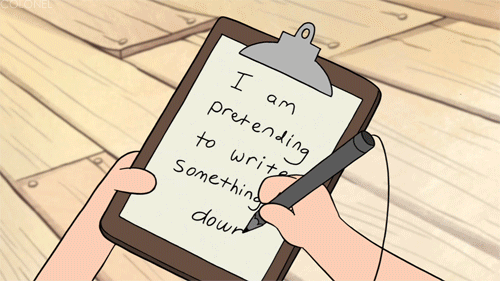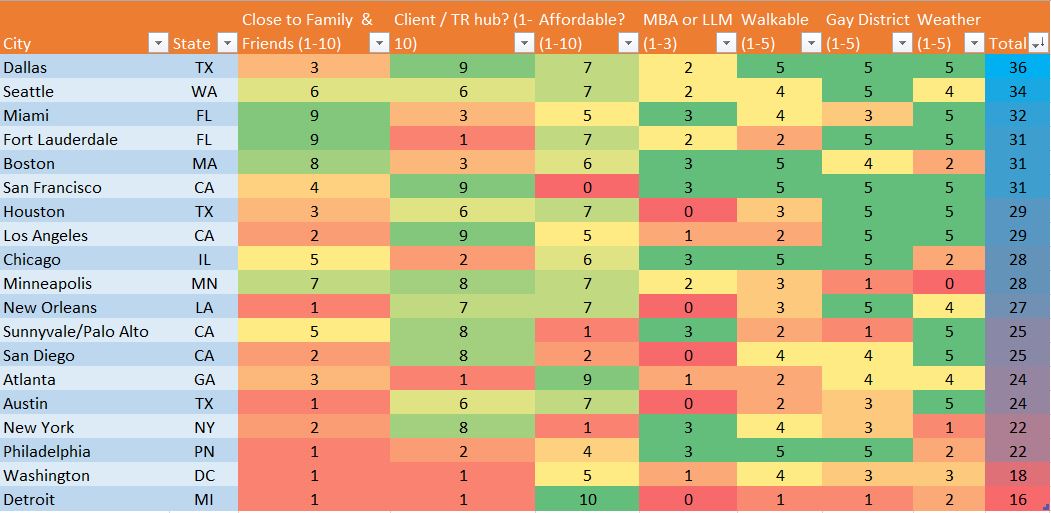Staying organized is one of the most common blogging challenges.
Whether you suffer from a lack of ideas or have way too many of them, a content calendar can help you organize your thoughts and stay on track.
Here is a free Microsoft Excel Blog Content Calendar to help organize your blog.
The file includes a blank template and a tab with a completed example:
Let me know whether it is useful!
Blog Content Strategy 101
Here are the basic elements of any strong blog content strategy:
1. Blog Mission
Write a concise mission statement that describes your purpose for blogging.
A good mission statement will inform your editorial decisions and will eventually help you determine whether your blog is a success.
When writing a mission statement, focus on what your blog will offer to its readers, instead of what the readers will do for you.

Ask:
- Why should people read your blog?
- Why will people share your content?
- How will your blog be different from what is already out there?
Mission statements can also help you decide whether something is “on brand” for you.

If something doesn’t match your blog’s mission, it should probably be skipped.
2. Blog Name
Once you have figured out your blog’s mission, it is time to give your blog a name.

Naming your blog seems really simple, but here are two things to consider:
1. Building the right brand equity – naming your blog after yourself is a great way to promote your personal brand, but it may make it harder to add collaborators or sell your blog to a larger company later.
2. Mission correlation – it is possible to have a widely read blog that still fails at its core mission.
Here are two examples:
- SCOTUSblog – this has been the go-to blog for Supreme Court news for years, but guess what? It failed at its original purpose to promote its publisher’s law firm. Although it is possible that your blog will also become a self-sustaining venture like SCOTUSblog, it is smarter to start with a clear goal in mind.
- No.634 – This blog was previously a law student blawg named No.634. Although my blog was nationally popular back in the day, the confusing and hard-to-remember title made it difficult to build any long-lasting brand equity. There was also no correlation between the blog title and content, which turned off many visitors.

3. Blog Goals
You should have realistic incremental goals for your blog to see whether you are successfully working toward fulfilling your mission.
Establish goals for the short, mid, and long-term to track your progress. I recommend 1, 3, and 12-month intervals:
- 1 Month Goal – the short-term goal should be to establish a blogging routine and baseline foundation of valuable content.
- 3 Month Goal – this mid-term goal should be either traffic or revenue related. Are people reading your content or buying your product? If not, perhaps your content is not appealing enough or it is time to switch up tactics.
- 1 Year Goal – this goal should all about ambitious, but realistic metrics. How many average visitors or leads do you wish to generate?
Remember that your goals should be specific and measurable.
4. Blog Tactics
So you have a mission, a name, and goals, but how will you achieve them?

Write down three actions that will help your blog accomplish its goals.
Examples:
- Update my blog with well-written content and high-quality photography on a daily basis.
- Build a community by engaging readers and other bloggers in a meaningful way every day.
- On a monthly basis, test one new content and promotion method, and keep what works.
5. Content Idea Bucket
Every blog should have an idea bucket. Pick 3 to 5 main categories for your blog and jot down ideas as they come to you.
Your idea bucket is a great resource for post ideas if you are ever in a rut.

Keep the ideas in one place – whether on your phone, a notebook, One Note, or the blog template.
6. Editorial Calendar
Now it is time to figure out when you should write.
A blog calendar is particularly useful for multi-author blogs, so you don’t duplicate the work of your co-authors. Consider setting up a shared Google Calendar with assigned days.
You can give categories particular days, or cycle through in order. The blog template is color-coded so you can cycle five blog categories throughout the month.
7. Start Blogging.
Go ahead and download the template, look at the example tab, and let me know if it is useful!




No Comments